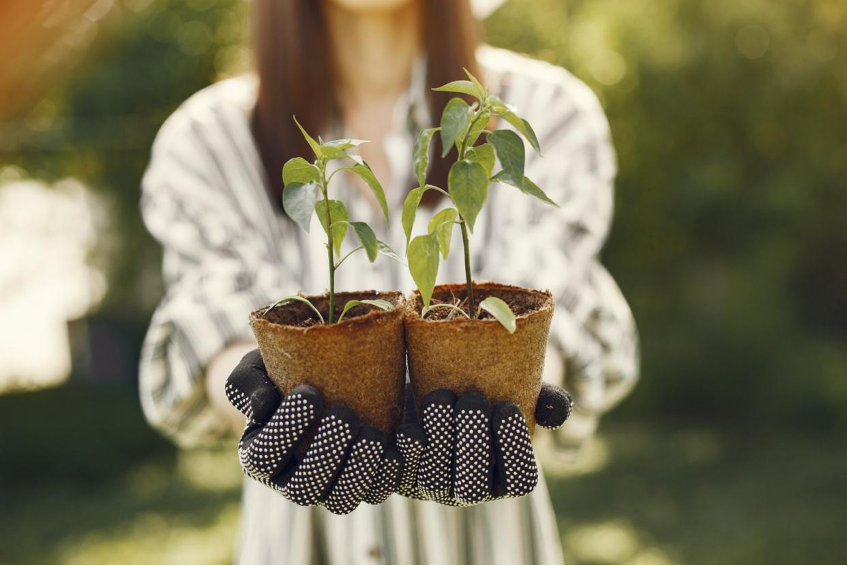 Did you know that composting with worms can help keep your garden’s soil moist enough? Using composting worms to break down kitchen scraps results in vermicompost (literally: worm compost). Just by keeping a worm bin, you will have a ready supply of vermicompost to use in your garden. Vermicompost in the soil nourishes the plants and adds air pockets. The air pockets allow proper drainage, helping to regulate soil moisture.
Did you know that composting with worms can help keep your garden’s soil moist enough? Using composting worms to break down kitchen scraps results in vermicompost (literally: worm compost). Just by keeping a worm bin, you will have a ready supply of vermicompost to use in your garden. Vermicompost in the soil nourishes the plants and adds air pockets. The air pockets allow proper drainage, helping to regulate soil moisture.
Most people are busy and want to be efficient about watering their plants. There are two main ways to save time watering plants. The first is to choose the right plants. The second is to improve water retention by adding compost to your soil.
Choose Plants for Dry Areas
If you have a spot in your yard that tends to be dry, or you live in a dry climate, choose plants that do well in dry areas. Otherwise, even watering multiple times a day may not be enough to keep your plants healthy.
When you buy plants, read the label carefully. Search for plants that like dry conditions.
Another good choice is native plants. These plants were in North America before Europeans arrived, so they are adapted to the climate here. Even if your climate normally has plenty of rain during the summer, plants that are native to your area can survive during a dry spell with little attention.
Prepare Your Soil So It Retains Water
Your soil will retain water better if you add vermicompost. Start by harvesting compost from your worm bin. If your worm bin is new, it takes a few weeks or months to get enough vermicompost. In that case, you can buy finished compost.
Here are some ways you can add compost to your garden’s soil:
- When you grow starts, use vermicompost in the mix
- When tilling or otherwise preparing the garden for planting, dig in vermicompost
- After planting, add vermicompost as a top dressing
- When the plants are growing, add vermicompost as a side dressing
Group Plants by How Much Water They Need
If you have favorite plants that need more watering and you are willing to put in extra work to maintain them, group them all together. That way, when you water an area of your garden, you will be giving water to all the plants that really need it. Also, you won’t waste water on less needy plants.
Water the Roots, Not The Leaves
Plants can’t take in water through the leaves, so sending a cascade of water onto the top of your plant doesn’t help at all. However, spraying the leaves with worm tea can be beneficial.
Get the water on the soil, not the plant. Take the spray attachment off your hose, set the hose on the ground and let the water run slowly. Leave the hose in place long enough for the water to soak through the soil all the way down to the roots. This may take awhile; step away and do something else.
How do you know when you have watered enough? Stick your finger into the soil as deep as the roots. If the soil is not damp yet, keep watering.
Water When It Rains, Water When It Doesn’t
When you look out the window and see some sprinkles, what is your reaction? Maybe it is something like: “Whew! Now I don’t have to water.”
But maybe you do have to water.
How heavily did it rain? How long was the rain coming down? Did the water actually get down to the roots?
Test to see if the rain penetrated the soil far enough. If not, get out the hose. Sometimes you have to water when it does not rain, and sometimes you have to water even if it does.
Uncle Jim’s Worm Farm has a complete selection of composting worms, specialized vermicomposting bins, and accessories. We also carry mealworms and seeds. Please check out our blog for more tips on gardening and composting.









3 thoughts on “Vermicompost Holds Water: Tips On Garden Watering”
You had a long article on Seed Savers runner beans, but I could find no way to order them. Only bush beans among the seeds offered. Are the runner beans for sale?
I have a question, can I keep night crawlers in a raise bed which has legs ,brings the raised bed about 2.5 feet off the ground.
Bees are swarming on my worm composter. Any ideas why?